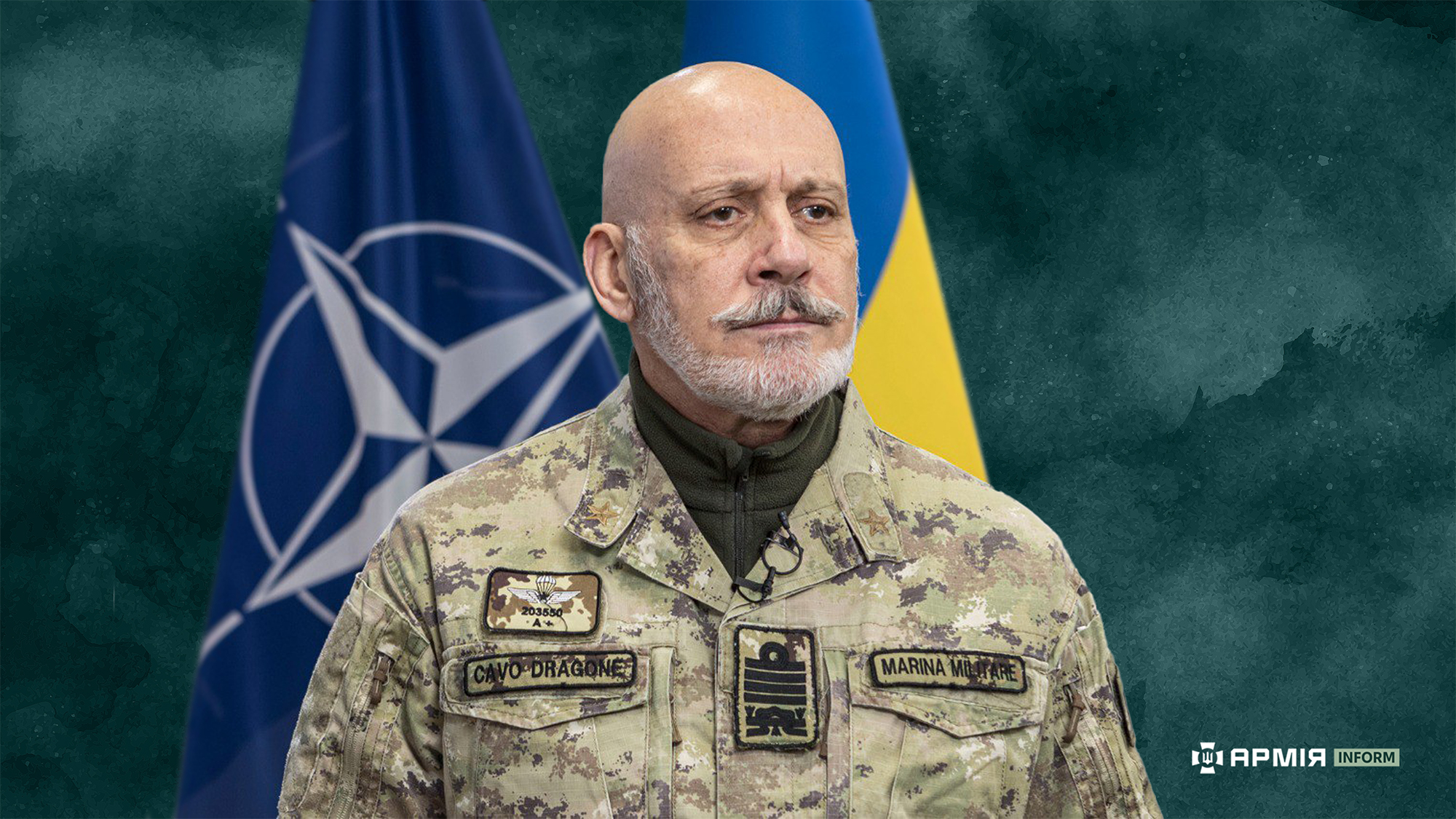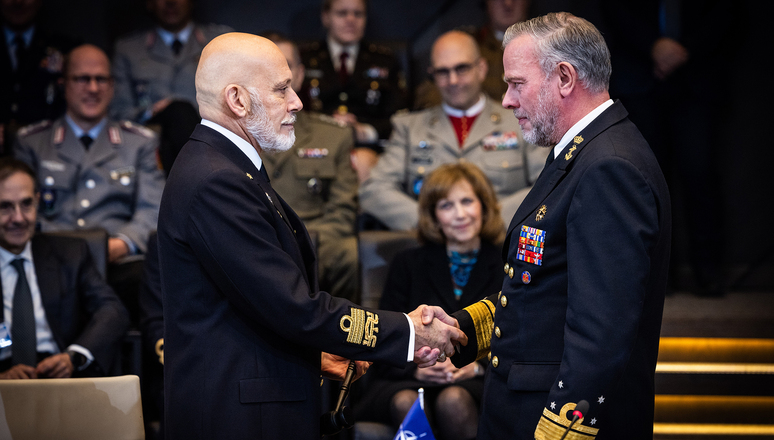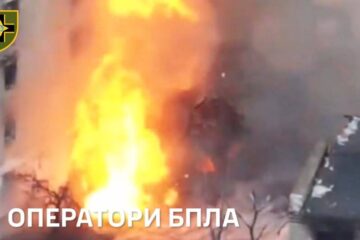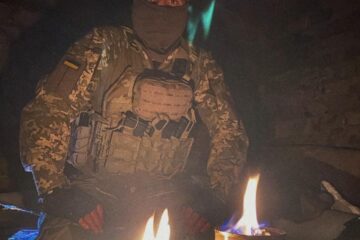Прочитаєте за: 8 хв. 10 Лютого 2025, 6:43

Last week, the highest-ranking military leader of the North Atlantic Alliance, Admiral Giuseppe Cavo Dragone, Chair of the NATO Military Committee, visited Ukraine.
During his meeting with Ukrainian political and military leaders, Admiral Cavo Dragone discussed the needs of the Ukrainian Defense Forces and security sector reforms, and saw the capabilities and characteristics of Ukraine’s long-range weapons.
In an interview with ArmyInform, Admiral Cavo Dragone spoke about the urgent needs of the Ukrainian Armed Forces, assessed Ukraine’s strikes on Russian military targets and the likelihood of negotiations on a peaceful settlement of the war.
— What will be your priorities as Chair of the NATO Military Committee, and what are the key challenges now?
— As Chair of the NATO Military Committee, my top priority will be ensuring that Ukraine will continue to receive the supports it needs to be in the strongest position, while maintaining NATO’s readiness to deter any threats to Allied territory. The situation on the battlefield remains difficult, with Ukraine holding parts of the Kursk region while facing ongoing Russian advances and air attacks on its power grid.
The current key challenges include maintaining the strongest NATO momentum in support for Ukraine, countering hybrid threats such as cyberattacks and sabotage, and ensuring strong NATO defence capabilities. Russia’s reliance on support from North Korea, Iran, and China highlights the global nature of the threats we face. Strengthening NATO’s deterrence posture, particularly on the eastern flank, and increasing defence production remains critical.

We are adapting to ensure we can deter and defend against a broad and evolving range of threats, including in the context of grey-zone or hybrid warfare tactics, with clear destabilization objectives. These threats include international terrorism and terror groups, threats from the South, and challenges in the Arctic, which demand a 360-degree security approach.
— What do you see as the main challenges in maintaining Ukraine’s defensive capabilities?
— The primary challenge is ensuring a continuous and predictable supply of military aid, including ammunition, air defence systems, and long-range strike capabilities. Ukraine’s forces intercept Russian missile and drone attacks daily, but air defence stocks must be replenished.
Another key challenge is Russia’s sustained pressure on multiple fronts. Over 700,000 Russian soldiers have been killed or wounded since February 2022. The introduction of North Korean troops is a dangerous development, demonstrating Putin’s reliance on external forces.
Russia’s attacks on Ukraine’s infrastructure also weaken its defence production and energy sector.
This is why at the Washington Summit last year, Allies agreed a robust package of support for Ukraine for the long haul:
- the establishment of NATO Security Assistance and Training for Ukraine (NSATU), which is taking over the coordination and provision of most international security assistance to Ukraine. NSATU is headquartered in Wiesbaden, Germany and includes logistical hubs in the eastern part of the Alliance;
- a financial pledge to provide a minimum baseline of 40 billion euros in military assistance for Ukraine, with plans to review this amount at future Summits;
- further steps to bring Ukraine closer to NATO on its irreversible path to membership, including through the establishment of the NATO-Ukraine Joint Analysis, Training and Education Centre (JATEC),
- and the appointment of a NATO Senior Representative in Ukraine.
— What are the most critical types of military aid that NATO and its member states should prioritize for Ukraine?
— Allies are strongly committed to further strengthen Ukraine’s defence and we welcome any announcements to provide Ukraine with additional military capabilities. We saw great examples at the last meeting in Ramstein – from the US, Canada, Latvia, the UK and others.
We see clearly that Ukraine needs advanced air defence systems, long-range precision strike capabilities, and increased artillery and ammunition supplies. Given Russia’s continued missile and drone attacks, NATO and Allies must ensure Ukraine has sufficient air defence to protect its infrastructure.
Ukraine also requires sustained deliveries of 155 mm artillery shells, armored vehicles, and long-range weapons to strike Russian military targets. To enhance long-term sustainability, NATO must also support Ukraine in developing its domestic defence production.
— How does NATO assess the use and impact of F-16s on the battlefield?
— The introduction of F-16s into Ukraine’s air force has strengthened its ability to contest Russian air power, intercept enemy aircraft, and strike military targets effectively. These jets are particularly valuable in countering missile and drone barrages.
However, their full impact depends on sufficient pilot training, maintenance capabilities, and continued supplies of weapons and spare parts. NATO has facilitated training and logistics support to maximize their effectiveness.
— How do Ukraine’s strikes on military targets in Russia affect the aggressor’s ability to continue the war?
— Ukraine’s strikes on military targets inside Russia are a legitimate form of self-defense under international law. These attacks disrupt Russian logistics, weaken its ability to launch further assaults, and force Moscow to allocate more resources to its own defense.
While these strikes alone may not end the war, they impose significant costs on Russia by targeting fuel depots, airbases, and ammunition stockpiles. Russia’s growing battlefield losses, combined with mounting pressure on its defense industry, are gradually degrading its long-term military capabilities.
— How long does NATO estimate Russia can continue its war against Ukraine? What are Russia’s losses?
— Russia has suffered over 700,000 casualties since February 2022, including killed and wounded soldiers. Thousands of tanks, armored vehicles, and aircraft have been destroyed, and the Russian navy has been pushed out of large parts of the Black Sea.
Despite these losses, Russia continues the war with support from North Korea, Iran, and China. However, sustaining such high attrition levels is unsustainable in the long run. Continued military support for Ukraine will further degrade Russia’s war-fighting capabilities, placing Ukraine in a stronger position when negotiations occur.
Our focus needs to be on supporting the end of the war is to ensure Ukraine can enter any negotiations from a position of strength.
— What is NATO’s assessment of North Korea’s involvement in the war? How can its support for Russia be stopped?
— North Korea is supplying Russia with ammunition, missiles, and even personnel, escalating the conflict. This poses a significant threat, allowing Russia to replenish its stocks despite heavy losses.
It is also another breach of UN Security Council resolutions and a dangerous expansion of Russia’s war. NATO has called on Russia and North Korea to cease these actions immediately.
Stopping North Korea’s involvement requires tightening sanctions, increasing diplomatic pressure on China, and intercepting arms shipments through intelligence and naval cooperation. Strengthening deterrence measures against North Korea is necessary to discourage further military collaboration with Russia.
— What could be NATO’s role if individual member states decide to participate in a peacekeeping mission in Ukraine?
— Recommend to shift the focus towards bolstering support to Ukraine, so that it is in the strongest position possible when it reaches the negotiation table for peace talks.
Discussions about what follows after this depend on how strong Ukraine’s hand can be at the table. And to ensure Ukraine has agency in deciding ultimately what comes next once peace talks conclude, on Ukraine’s terms.
NATO’s focus remains on strengthening Ukraine’s military capabilities, rather than deploying peacekeeping forces in an active war zone.
— Russia has been making statements about its alleged readiness to negotiate, but at the same time it has set the condition that Ukraine cannot be a member of NATO. Should talks begin under such conditions?
— Ukraine has the sole right to decide the terms of any peace talks. NATO fully supports Ukraine’s sovereignty and rejects any conditions that would force it to renounce its future security.
History shows that ceasefires with Russia do not guarantee lasting peace. The best way to bring Russia to negotiations under favorable conditions is to ensure Ukraine remains strong militarily. Furthermore, Ukraine’s path to NATO membership is irreversible, as affirmed at the Washington Summit.
— If a new U.S. administration reduces military aid, is NATO prepared to compensate?
— At the Washington Summit NATO committed to long-term support for Ukraine, with Allies pledging a minimum of 40 billion euros in security assistance for 2024. The NATO Security Assistance and Training for Ukraine (NSATU) assumed responsibilities in December.
While I will not speculate on potential changes in U.S. policy, NATO is working to ensure aid is evenly distributed and sustainable. The establishment of NSATU demonstrates NATO’s commitment to long-term support regardless of political changes in individual member states.
Ukraine’s security is our security, and we remain steadfast in our support.
Джерело публікації: “History shows that ceasefires with Russia do not guarantee lasting peace”. An interview with Admiral Giuseppe Cavo Dragone, Chair of the NATO Military Committee



